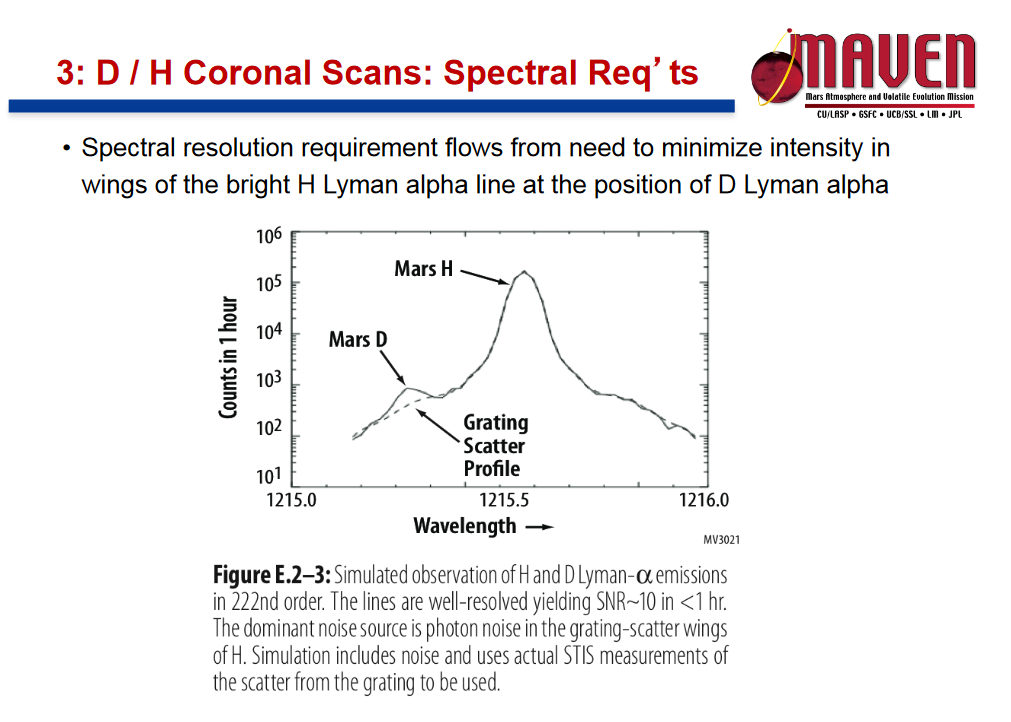The Time article Mars Has Much More Water Than Previously Known—But There's a Catch says:
The greater weight of deuterium causes it to behave differently in the Martian atmosphere. While free hydrogen atoms that were once part of a water molecule escape into space, free deuterium weighs enough to hang around in the air. Over time, as more and more hydrogen drifts away from the planet and more and more deuterium stays behind, the ratio of deuterium to hydrogen (D/H) slowly grows.
“The loss of hydrogen is a sort of constant removal,” says Eva Lingh Scheller, Caltech PhD candidate and the lead author of the paper. “Removing it from the total volume is going to give you a larger D/H ratio.”
But there’s a problem with common measures of Mars’s D/H ratio, Scheller and her colleagues found. Using atmospheric observations by NASA’s MAVEN Mars satellite and the European Space Agency’s Mars Express craft, they concluded that the current ratio is simply too low. If all of Mars’s water had escaped to space, taking its free hydrogen atoms with it, there would be much more deuterium in the modern day Martian sky relative to the remaining free hydrogen—by some measures, more than twice as much. That means that much of the planet’s water never escaped, and the only other place it could have gone was into the soil and rocks—especially into clay, the most abundant mineral on Mars.
That Mars' water may not have all evaporated but instead "gone underground" is pretty important, so I'd like to ask these
Questions:
- Which instruments on MAVEN and Mars Express measured the D/H ratio in Mars' atmosphere?
- What techniques were used to separately detect the amounts of these two isotopes of hydrogen? Were wavelengths involved? Diffraction gratings? Etalons? Microwaves? Mass Spectrometers?
Potentially helpful:
- Science: E. L. Scheller et al. (2021) Long-term drying of Mars by sequestration of ocean-scale volumes of water in the crust (open access at authors.library.caltech.edu)
